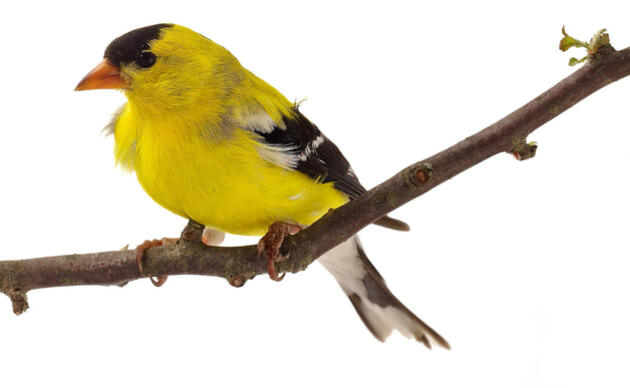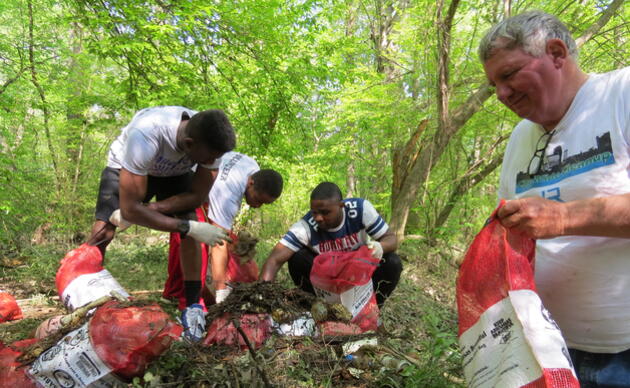Q. Why is forest management needed now?
A. Little Rock’s tree management program has focused on treating individual trees. This has come at the expense of overall forest health and biodiversity. We realize there are long-term benefits to proactively treating an entire forest instead. Little Rock Parks and Recreation, with guidance from conservation partners, is developing a natural resources management plan for all city-owned forested acres. Implementation is starting in Fourche Bottoms.
In 2015, Audubon Arkansas provided to the Little Rock Parks and Recreation a bird-friendly forest management plan for Fourche Bottoms. The plan was developed by University of Arkansas at Monticello foresters and a private forestry consultant engaged by Audubon. At 1,800 acres, Fourche Bottoms is one of the largest urban wetlands in the country. This city-owned forest in the heart of Little Rock is home to over 700 plants and animals.
Despite its size and species diversity, Fourche Bottoms does not live up to its full potential. Basically, there are too many trees in the overstory and too many invasives in the understory. Forest-dependent birds and other wildlife favor structurally diverse and plant species-rich forests containing large trees and frequent canopy gaps. To restore habitat quality and sustain forest-dependent birds, management is needed now.
Q. Is the City of Little Rock cutting trees just to make money?
A. The goal of bird-friendly forestry is to create wildlife habitat, not make money. Quality habitat for wildlife requires some sacrifice in timber production. Many trees with high timber value will not be touched. There may be instances where trees are cut and left on the forest floor in order to improve habitat quality. The proceeds from timber sales will cover the costs of management, and any profit will be reinvested in future management.
Q. What does a healthy, bird-friendly forest look like?
A. A healthy, bird-friendly forest has complexity. It has a diversity of tree species of many different ages and sizes. Between mature trees there are gaps on the ground and in the canopy. Where there are canopy gaps, sunlight hits the ground, nurturing young trees, shrubs, and wildflowers. Dead trees, both standing and fallen, are scattered about. Sections of the forest look different from each other because they are managed at different times. Over time, the look of a section changes as plants grow and management is adjusted accordingly.
Q. What forest management practices will be used?
A. Forest management practices are primarily ecological thinning, invasive species control, and prescribed fire.
Q. What will I see and hear when this work is taking place?
A. The first step is marking trees that will be taken. During ecological thinning, equipment and trucks will be going in and out, and you’ll see a flagger and signs for traffic control. There will be some noise from the operation in the forest.
Q. Will this ruin the forest?
A. There will be short-term damage. It may even look devastating. Fortunately, forests respond quickly to habitat disturbances. Plants that have been suppressed in the understory will grow quickly once they have access to sunlight, water, and nutrients. Species that have laid dormant in the seedbank for decades will appear. The forest will be lush in a matter of weeks to months. Forest health will improve in the long-term.
Foresters will follow best management practices (BMPs) to minimize their impact to the soil, streams, roads, and trees.
Q. If you cut down the trees, where will the birds live? Won’t they be displaced?
A. Trees will be cut but it will still look like a forest with, thousands of trees left standing. Birds and other wildlife quickly return to a forest that has been managed with them in mind. Soon after the people and machines are gone there will be lots of new plant growth creating lots of new feeding and nesting opportunities. In addition, Fourche Bottoms will be treated in sections, with work done in only one section every two or three years. Birds will have plenty of places to live.
Q. Why not cut down all the trees in Fourche Bottoms to make a ball field or a business park?
A. There is a reason why Fourche Bottoms has not been developed. It is a floodplain forest, a low lying area where Fourche Creek overflows its banks during heavy rains. It provides valuable ecological and economic services including floodwater storage, wildlife habitat, outdoor recreation, and air and water pollution filtration. Little Rock needs this greenspace. Only low-impact development like trails, boat ramps, and fishing platforms are appropriate.
Birds, pollinators and other species are declining in numbers due in part to our built environment replacing their natural habitats. It is important that we provide an interconnected, balanced, and healthy environment for all species because of the free services they provide to our agricultural industry and ultimately our health.
Q. How long will it take to do this management?
A. Initial tree marking and ecological thinning in one section will take a few months, depending on weather. In the following year or two, invasive species need to be treated, and a few more trees may need to be taken to meet the prescription. Each treatment will be implemented every 3 years across 5 stands, taking a period of 15 years to treat the entire forest. Having treated all stands once, then the first treated stand can be re-evaluated and treated again if necessary to work towards or maintain bird-friendly forest conditions
Q. Who will do the management?
A. A registered forester, well-trained and certified through the state, writes the management prescription, oversees the forestry work, and makes adjustments over time. The forester ensures the work follows best management practices. In addition, the Arkansas Department of Agriculture Forestry Division will assist with quality control.
Little Rock Parks and Recreation is writing an overall natural resources management plan for all of the forested acres owned by the City. Partners assisting with this plan are: Arkansas Department of Agriculture Forestry Division, Arkansas Forestry Association, Arkansas Game & Fish Commission, Arkansas Natural Heritage Commission, Audubon Arkansas, Central Arkansas Water, Quail Forever, and The Nature Conservancy.
Q. Do Arkansans really care about habitat for birds and other wildlife?
A. A statewide poll conducted The Nature Conservancy in 2018 reveals that 96% of Arkansans think conserving fish and wildlife habitat is an important conservation issue, while 94% also want to conserve land for outdoor recreation such as camping, birding, and wildlife watching. Additionally, 87% said they would support efforts to reduce pollution in our streams, rivers and lakes due to runoff; a healthy managed forest reduces runoff and water pollution.



